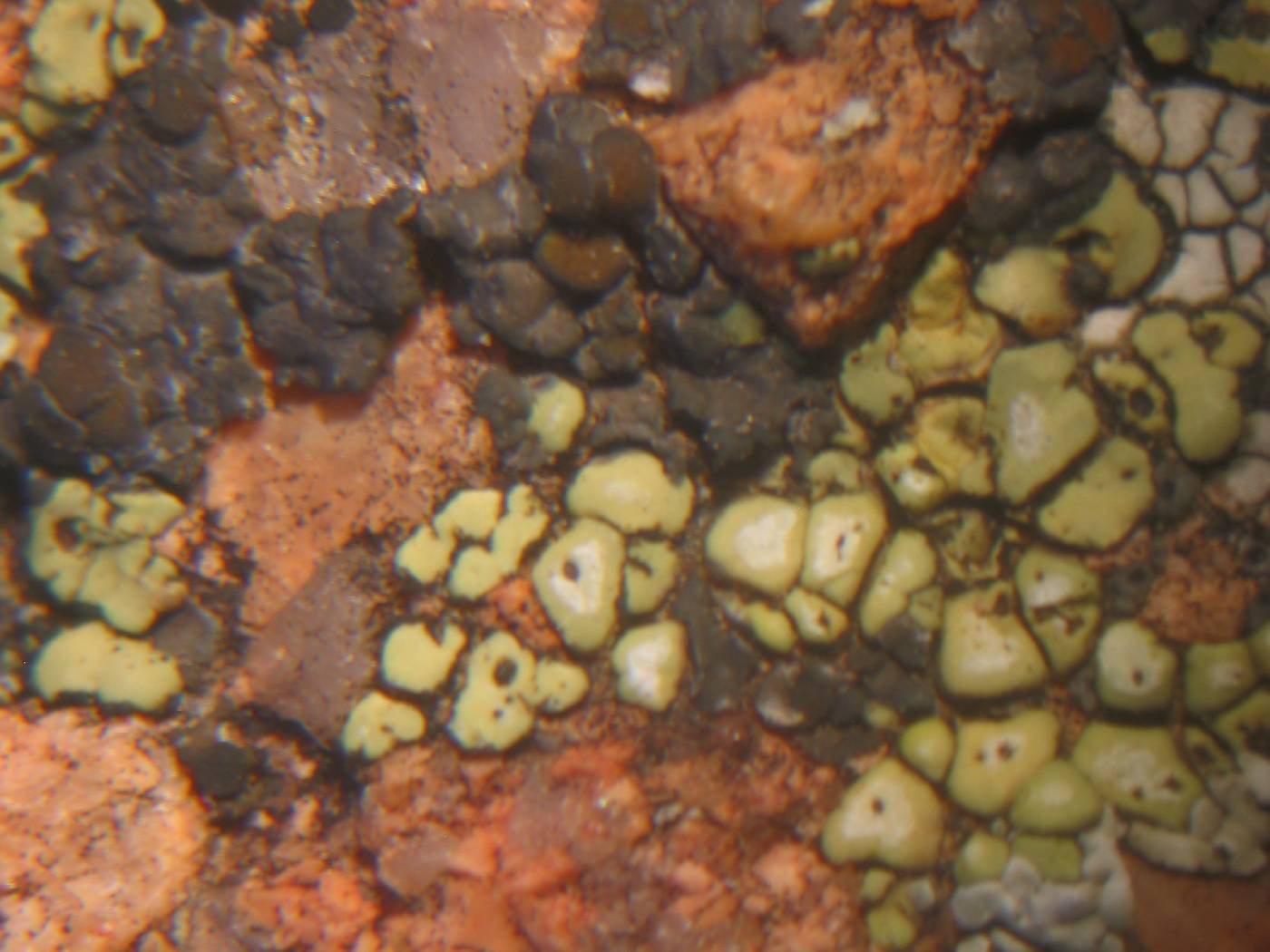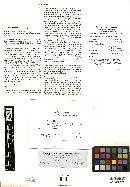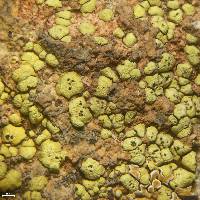
Consortium of Lichen Herbaria
- building a Global Consortium of Bryophytes and Lichens as keystones of cryptobiotic communities -
- Home
- Search
- Images
- Species Checklists
- US States: O-Z >
- US National Parks
- Central America
- South America
- US National Parks
- Southern Subpolar Region
|
|
|
|
Family: Acarosporaceae
|
Nash, T.H., Ryan, B.D., Gries, C., Bungartz, F., (eds.) 2007. Lichen Flora of the Greater Sonoran Desert Region. Vol 3. Thallus: areolate, up to 5 cm across areoles: round to irregularly lobed, eventually subsquamulose, 0.3-2 mm in diam., elevated, up to 1 mm thick, contiguous or dispersed in indeterminate groups; rim: ±down-turned upper surface: yellow to whitish yellow, dull, plane to convex, smooth to rugulose, epruinose or farinose with fine pruina or the center area caked with coarse pruina like Acarospora chrysops cortex: paraplectenchymatous, 40-50 µm thick; syncortex: lacking; eucortex: upper half yellow, lower half hyaline algal layer: thin, about 40-50 µm thick medulla: white, prosoplectenchymatous, continuous with attaching hyphae lower surface: white, ecorticate attachment: broad, thickening above the substrate, elevating the areole (gomphate), lacking a stipe Apothecia: 1-5 per areole, round to irregular, often merging disc: red to black, rough, pruinose or epruinose, often with some remaining interascal sterile plectenchyma from merging apothecia parathecium: usually 40-50 µm wide, often forming a parathecial crown epihymenium: yellow with red tints, conglutinate, 13-16 µm thick hymenium: hyaline to pale yellow, 90-110 µm tall; paraphyses, 1.8-2.2 µm in diam. at base, apices barely expanded, many with red-brown pigmented hoods subhymenium: pale yellow, 30-50 µm thick; hypothecium: 10-15 µm thick asci: clavate, 75-80 x 15-20 µm, 100+ -spored ascospores: hyaline, simple, narrowly to broadly ellipsoid, 4.5-6 x 1.8-2 µm, with a distinct perispore Pycnidia: not observed Spot tests: UV+ orange, P-, K- and C- Secondary metabolites: hypoprotocetraric acid (major), acaranoic acid (major), 4-Odemethylnotatic acid (minor), and rhizocarpic acid (major) (HPLC, J.A. Elix, pers comm.) Substrate and ecology: about 400-2200 m, often on north-facing slopes at lowest elevations, on granite, sandstone, and volcanic rock World distribution: southwestern USA (Arizona, New Mexico) and NW Mexico Sonoran distribution: Arizona and Sonora. Notes: Acarospora affinis is similar to A. chrysops, and is hard to distinguish from it especially when areoles are small, except with TLC. It does become larger than A. chrysops, as it becomes subsquamulose, thicker and more convex. Like A. chrysops, its attachment is wide, although the mycelial base eventually thickens above the substrate, elevating the areole. Its morphology is distinctive from A. chrysops in the final development of its areoles, and hence, it is not merely a chemotype of A. chrysops. As documented by Prof. J.A. Elix, it is one of two Sonoran species with the fatty acid, acaranoic acid, once thought to occur only in the genus Pleopsidium. |
Powered by Symbiota
















